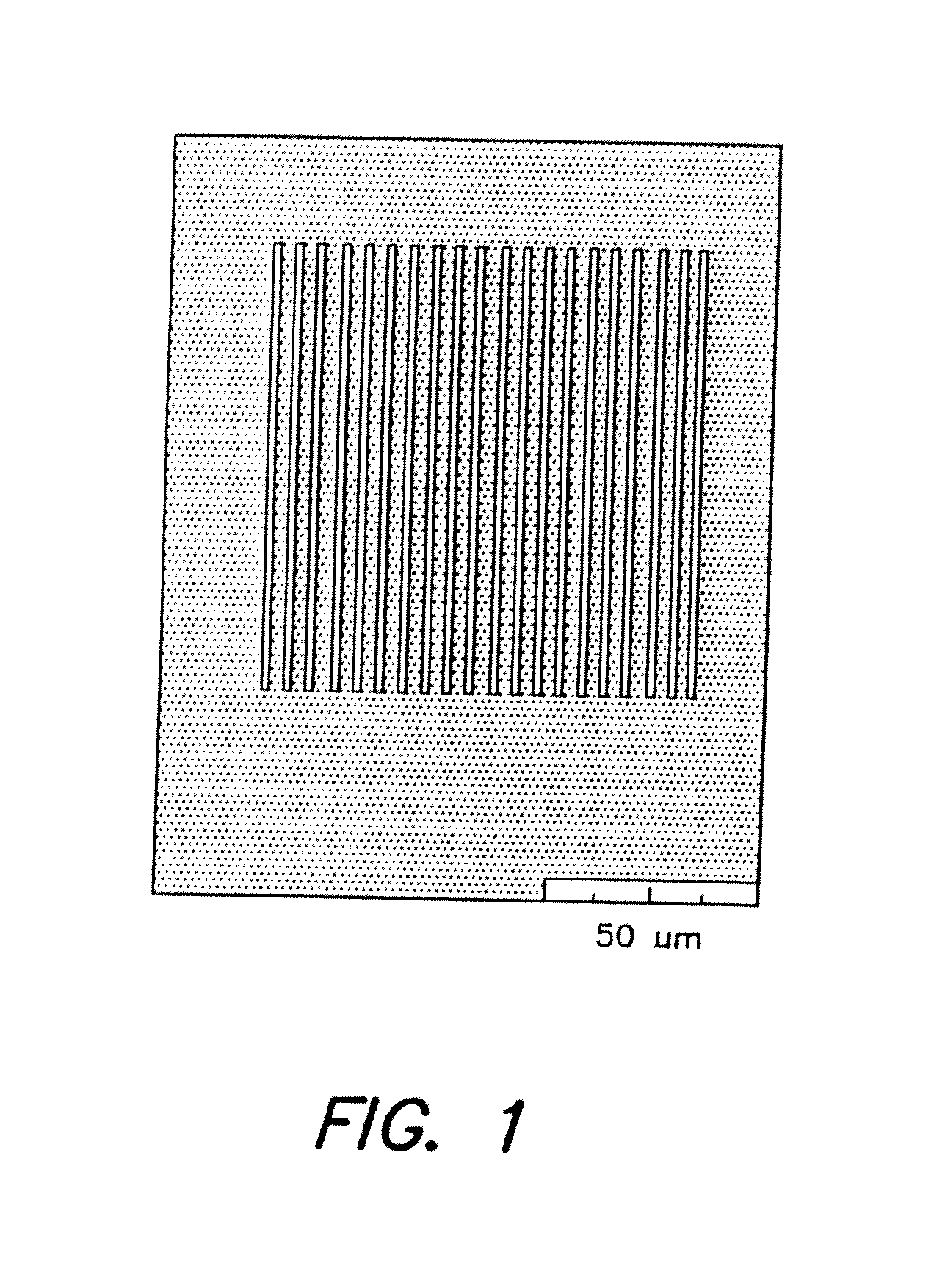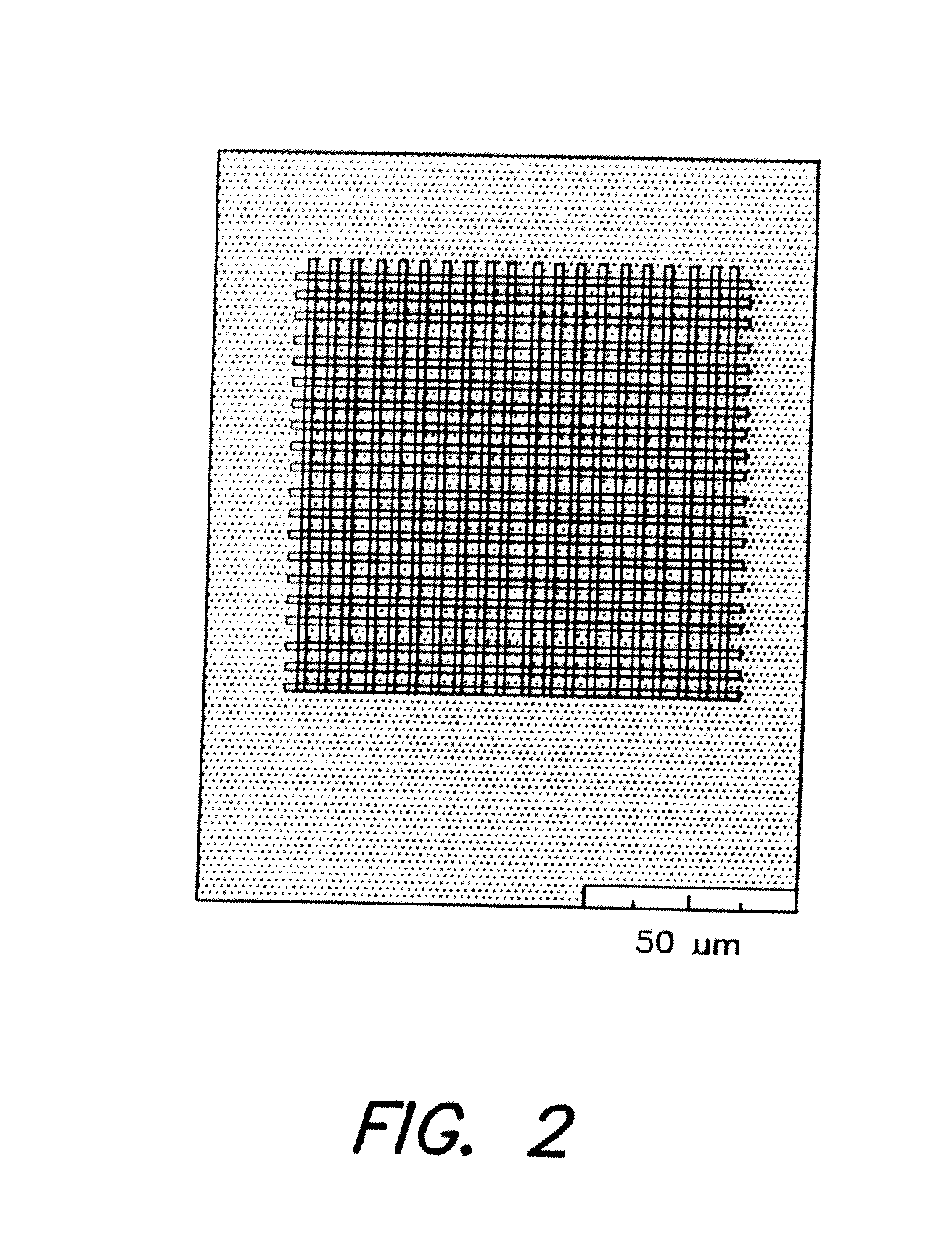Optical Hydrogel Material with Photosensitizer and Method for Modifying the Refractive Index
a technology of optical hydrogel and photosensitizer, which is applied in the field of intraocular lenses, can solve the problems that most patients undergoing cataract surgery will not enjoy optimal vision, and achieve the effect of facilitating the formation of refractive structures
- Summary
- Abstract
- Description
- Claims
- Application Information
AI Technical Summary
Benefits of technology
Problems solved by technology
Method used
Image
Examples
example 1
Preparation of Akreos® IOL with 17% coumarin-1
[0103]Coumarin 1 dye (2.5 g) is dissolved in an ethanol-water mixture containing 10 mL ethanol and 5 mL water. Dry weight of the Akreos sample is recorded. The samples are hydrated in pure water and the mass is recorded. Following the hydration step, the samples are soaked in the ethanol-water mixture containing the coumarin 1 dye until a constant mass is attained. The mass after soaking in the dye solution is recorded. Mass of the dye doped is calculated as the difference between the mass after soaking in the solution, and the dry mass multiplied by the mass concentration of the dye in the ethanol-water solution. Percentage of the dye doped is calculated as the ratio of mass of coumarin 1 dye doped over the dry mass multiplied by 100.
example 2
Forming Structures In Akreos® IOL Materials
[0104]The optical system described was used to form line structures in select regions of optical materials. Experiments were conducted with Akreos® IOL materials with and without photosensitizer. Akreos® IOL materials comprise about 80 wt % HEMA and 20 wt % MMA with a water content of about 26% using similar process conditions described above.
[0105]The hydrated sample was mounted horizontally on the scanning platform, and the femtosecond laser beam was directed vertically downward through the high-numerical-aperture objective and was focused inside the bulk material, as shown in FIG. 7, at a depth of about 100 μm from the upper surface of the sample. Periodic gratings structures were created with a scanning speed of 0.4 μm / sec in an X-Y plane perpendicular to the laser beam. An Olympus BX51 Model microscope was used to observe the gratings that were created inside these three materials.
[0106]The microscope images showed periodically paralle...
example 3
Preparation Of Pure Vision® Silicone Hydrogel with 0.07 Wt. % Fluorescein
[0111]Fluorescein (0.25 g) dye is dissolved in an ethanol-water mixture containing 50 mL ethanol and 50 mL water. Dry weight of the Pure Vision sample is recorded. The samples are hydrated in pure water and the mass is recorded. Following the hydration step, the samples are soaked in the ethanol-water mixture containing fluorescein dye until a constant mass is attained. The mass after soaking in the dye solution is recorded. Mass of the dye doped is calculated as the difference between the mass after soaking in the solution, and the dry mass multiplied by the mass concentration of the dye in the ethanol-water solution. Percentage of the dye doped is calculated as the ratio of mass of Fluorescein dye doped over the dry mass multiplied by 100.
PUM
| Property | Measurement | Unit |
|---|---|---|
| pulse energy | aaaaa | aaaaa |
| pulse energy | aaaaa | aaaaa |
| power | aaaaa | aaaaa |
Abstract
Description
Claims
Application Information
 Login to View More
Login to View More - R&D
- Intellectual Property
- Life Sciences
- Materials
- Tech Scout
- Unparalleled Data Quality
- Higher Quality Content
- 60% Fewer Hallucinations
Browse by: Latest US Patents, China's latest patents, Technical Efficacy Thesaurus, Application Domain, Technology Topic, Popular Technical Reports.
© 2025 PatSnap. All rights reserved.Legal|Privacy policy|Modern Slavery Act Transparency Statement|Sitemap|About US| Contact US: help@patsnap.com



